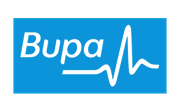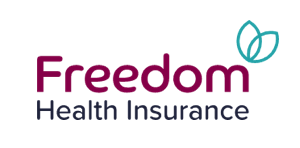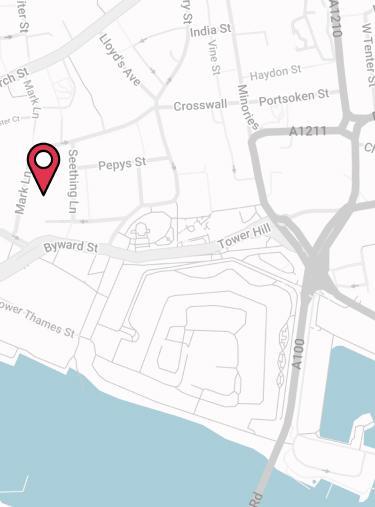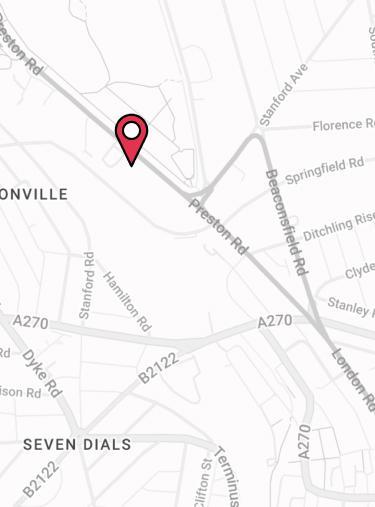
There’s a certain stigma associated with Private Health Insurance that it’s too expensive for the average person. But we’re here to debunk that. You can get health cover on a budget and still get a decent amount of coverage for the price.
For many of our individual clients at Drewberry™, affordability is a key factor. If you’re considering Private Medical Insurance as an alternative solution to long NHS waiting lists, you’ve come to the right place.
So, how can you get Low Cost Health Insurance? What does it actually cost? And what does a policy cover? This guide will tell you all you need to know about buying affordable Health Insurance.
What Is Low Cost Health Insurance?
Low Cost Private Health Insurance provides you with access to a certain level of private medical treatment. By buying a policy, you can skip the long NHS waiting lists and get the care you need when you need it most.
Your Health Insurance policy provides:
- A high standard of healthcare
- Access to the latest cutting-edge drugs and treatments at some of the best UK private facilities
- More choice and flexibility over your treatment
- An opportunity to tailor your policy to fit your budget.
Why Choose Affordable Health Care?
Affordable Private Medical Insurance is more important than ever, especially given the increasing pressures on the NHS. With patients often facing long waiting times for treatment and difficulties in securing GP appointments, having access to prompt medical care is crucial.
When we’re dealing with new symptoms, we want to be able to get the medical advice and care we need promptly. Low Cost Private Health Insurance cover can ensure more and more people get the treatment they need, when they need it. This can reduce anxiety and potential complications.

Affordable Health Insurance is important as it avoids pricing anyone out of a policy. Health insurers offer a variety of options to ensure private healthcare is accessible to all.
Samantha Haffenden-Angear
Independent Protection Specialist
Understanding Low Cost Private Health Insurance
You might be wondering how Low Cost Health Insurance differs from a standard health plan. The answer? It doesn’t. It’s exactly the same as any Private Medical Insurance you buy. The only difference is the focus on affordability.
If cost is your main worry, our specialists will work their magic to find the best cover for your budget. There are many ways to adjust your policy to reduce the price you pay (more on that later).
Does It Replace The NHS?
No. Whether you take out a fully comprehensive plan, or a more affordable Private Health Insurance policy, neither will fully replace the NHS. Instead, they will supplement the healthcare provided by it.
You’ll always rely on the NHS for emergencies, routine pregnancy, and any chronic conditions. Should you need medical help in an emergency situation, you aren’t going to have the time to wait on a policy claim. This is exactly why private healthcare doesn’t replace the NHS.
The level of cover on your policy will determine what you still use the NHS for. You’ll see how in the following examples.
IMPORTANT NOTICE❗️
Your GP will always remain at the forefront of your routine healthcare even if you have Private Medical Insurance.
No Outpatient Cover
Your chosen level of cover affects your route to private medical care. If you have a basic health policy without outpatient care, which tends to be the cheapest level of health insurance, your GP will refer you to the NHS for any diagnostic testing you need. After this, you’ll be referred for private healthcare if your policy covers it.

With Outpatient Cover
At Drewberry, it’s rare that our clients don’t add any outpatient cover to their policy. With outpatient care included, your access to private healthcare will go as follows. Rather than your GP referring you to the NHS for testing, you’ll be referred privately care straight away. This is only if your health issue is covered by the policy.
By having outpatient cover, the pathway to private treatment is often faster than the NHS. However, this is an optional extra which will increase the cost of your Health Insurance premiums. And while we don’t suggest you eliminate outpatient cover altogether, there are ways around it to make it an affordable price—we explain how later on.

Chronic vs Acute Conditions
We’ve distinguished how your level of cover can affect your access to private healthcare. It’s also important to know the difference between chronic and acute conditions.
When it comes to medical issues, there are two main types you could develop:
- Acute conditions
Any condition that passes with time and medical treatment. For example, cataracts needing removal or joint pain requiring a joint replacement - Chronic conditions
These conditions remain with you for life. Even with medical attention, doctors can’t cure them, only manage them. This includes asthma and diabetes.

Your Private Health Insurance policy, whether comprehensive or basic, will only cover acute conditions.
If you already have a chronic illness or you develop one, the NHS will provide all ongoing care. This applies even if you have an active health policy.
Alex Weir
Independent Health & Protection Specialist
What Does Low Cost Health Insurance Cover?
You now know how Low Cost Health Insurance works, but what does it cover?
Level Of Cover
Like with Comprehensive cover, the level of cover you get with cheaper health insurance policies will depend on how you set the policy up. All UK Health Insurance companies have a variety of options for you to choose from. The options you choose will determine how affordable your policy is.
All possible medical needs are split into two categories: Inpatient or Outpatient. It doesn’t matter whether you use the NHS or opt for private care, all treatment falls into one category:
- Inpatient treatment
Any treatment which requires a bed for at least one night. Inpatient treatment includes day-patient care where you’re admitted to hospital only for the day - Outpatient treatment
Includes diagnostic tests and procedures (scans, x-rays, blood tests) where you don’t need a hospital bed. Outpatient care is an optional extra you can add on for an additional premium.
All Health Insurance policies, even the most basic plans, cover inpatient and day-patient care as standard. If you have a budget, you can rest assured that you will always receive this type of care. However if you wish to add outpatient cover this will impact what you pay.
Cancer Cover
One concern for people looking for cheaper Health Insurance, is whether of not they would be covered for cancer care. The good news is that the majority of Health Insurance providers now offer a level of cancer care and treatment as standard, even on their more affordable policies. This often includes:
- Exclusive access to cutting-edge drugs, treatments and procedures not available on the NHS
- Chemotherapy / radiotherapy
- Cash towards wigs and prosthetics needed due to cancer treatment / surgery
- Bone strengthening drugs
- Access to home nursing for a set number of days
- Options to receive chemotherapy at home rather than in a clinical setting.
Optional Extras
Depending on your budget, you can add on a handful of optional extras to your policy if you wish. These can help to ensure all health bases are covered. But they will increase the cost of your premiums.
- Mental Health Support
- Physiotherapy
- Dental & Optical Cover
- Travel Insurance.
Free Additional Benefits
Affordable Private Health Insurance can come with some great additional benefits too. Some policies come with a range of free benefits included in the price you’ve been quoted for, adding real value. Keep this in mind when researching Health Insurance cover, as you may get some extras without paying any extra pounds!
These benefits may be available to you depending on the insurer:
- 24/7 Virtual GP service
- Nurse led medical helpline
- Online physiotherapy sessions
- Retail discount platforms.
What Doesn’t Low Cost Medical Insurance Cover?
It doesn’t matter how much you pay for your policy, there are always going to be exclusions. These apply to every policyholder and aren’t specific to the individual.
You can expect to see these excluded from your Health Insurance:
- Routine pregnancy / childbirth (you may be covered for complications)
- Chronic conditions
- Cosmetic surgery (unless medically necessary)
- Kidney dialysis
- Health issues related to alcohol or substance abuse
- Screening and preventative treatment (e.g. mammograms)
- Self-inflicted injuries, through dangerous sports or hobbies, for example.
Tips On How To Get Low Cost Health Insurance
To make private healthcare accessible for everyone, most health insurers offer options to help reduce the cost. There are a few adjustments you can make to your policy without having to skimp on the level of cover.
From the outset, we recommend opting for a basic Health Insurance policy. While this does only cover inpatient care, it still provides some access to private treatment. Any outpatient care you need leading up to your admission to hospital will not be covered.
Limit Outpatient Cover
We’ve already explained what treatment with and without outpatient cover looks like. If you’re happy for your local GP to refer you to the NHS for diagnostics, you can opt for no outpatient cover. If you’d like more protection, but not full cover, you can limit the amount of outpatient care on your policy.
There is often a capped monetary amount e.g. £1,500 or a set number of sessions each policy year. It provides at least some cover for outpatient diagnostic tests.

A Health Insurance plan with limited outpatient cover is considered ‘mid-range’. It offers a balance between full cover, which covers everything and basic cover that only pays for inpatient care. It’s a happy medium.
Alex Weir
Independent Protection Specialist
Add An Excess
Another option is to add an excess. This is the amount you’re willing to pay upfront for treatment before your Health Insurance kicks in.
The higher your excess, the lower your monthly cost. Excesses range between £0 and £5,000. A £0 excess amount is the most expensive for your policy. Opting for the highest amount will significantly reduce costs.
We advise our clients to consider how much they can realistically afford to pay upfront. There’s no use setting a high excess amount to lower your premiums if it’ll cost you more when it comes to making a claim. Your excess needs to balance premium affordability with practicality.
6 Week NHS Wait
The 6 week NHS wait option is a great way of making your Health Insurance plan more affordable. Including this on your policy means you agree to have treatment via the NHS if the waiting list is less than 6 weeks.
If the wait for the care you need is longer than 6 weeks, your insurance will kick in and you’ll get private healthcare. This only applies to inpatient care, though. If your Private Health Insurance covers outpatient care, any diagnostic tests and scans will be taken care of privately as soon as possible.
The 6 week wait option allows you to buy Private Health Insurance and avoid long NHS waiting lists.
IMPORTANT NOTICE 🧐
Due to the current length of NHS waiting times, some insurers such as AXA aren’t offering this option. The market changes regularly, so if you’re unsure, give us a call on 02074425880 or email help@drewberry.co.uk to find out your options.
Reduced Hospital Lists
When you buy a Health Insurance policy, insurers offer ‘tiers’ of hospital lists which determine where you can have treatment. A comprehensive hospital list, which includes the very best UK private facilities, will cost more than a reduced network.
By limiting your options to a few select private facilities, you’ll pay less for your policy. Some lists provide the option of using just NHS Trust and Partnership hospitals. This limits your treatment to private wards in NHS facilities as opposed to fully private hospitals.
SPECIALIST TIP 🤓
Excluding private London hospitals can cut costs, as they tend to be the most expensive. If you live in Scotland or Northern Ireland, you can reduce the cost by limiting cover to facilities in these areas.
Consider Switching Health Insurance Providers
If you already have a health policy, it’s likely you’ve experienced an increase in premiums over time. This is often necessary to cover the costs of medical advances and inflation.
At Drewberry, we also review existing Health Insurance policies to check you’re still getting the best value for money. If we can find you a more competitive price with another insurer, we can help facilitate the switch.
We recently spoke to one of our clients, Andrew, about his Private Health Insurance. With our specialist help, his policy has undergone a switch multiple times in order to save him some money! It’s essential to seek the advice and guidance of a specialist, as switching providers can be complex. This becomes even more important if you have any pre-existing medical conditions.
A specialist can make sure that your new policy is a good match for your previous plan, so your cover can continue without disruption or new exclusions.
IMPORTANT NOTICE 🧐
You’re unlikely to be able to switch if you’re in a claim or have recently made a claim on your policy. If it’s not possible to switch, you may be able to adjust your policy in the ways we’ve explained above.
Unsure About Your Options?
We know there is a lot of information to digest when looking for low cost Private Health Insurance. Even more so when you’re seeking affordable options.
Our team of financial advisers are specialists in the field. Together, they have years of experience helping people like you to set up Health Insurance when on a budget. They know all the best ways to reduce the cost of your premiums without sacrificing how much cover you get.
If you’re new to the minefield that is Private Medical Insurance, please don’t hesitate to get in touch. You can reach us on 02074425880 or via email help@drewberry.co.uk. We’ll be more than happy to help you find the best deal for needs and budget.
Health Insurance Client Stories
How Much Is A Low Cost Health Insurance Policy In The UK?
The cost of your Private Health Insurance policy will depend on the ‘tier’ of cover you have and the options you pick. You can buy:
- Basic Health Insurance
This typically doesn’t include any outpatient cover to reduce the cost of the policy. You will use the NHS for all outpatient tests, scans and consultations before the policy kicks in - Mid-Range Health Insurance
This includes at least some outpatient cover, typically capped, at £1,000 per policy year. You get a good balance between no outpatient cover and full cover under a comprehensive policy - Comprehensive Health Insurance
Comprehensive Health Insurance tends to cover both inpatient and outpatient in full. It may also include a range of options that are only extras on low-cost and mid-tier plans, such as psychiatric cover.
The most affordable policies will offer only basic cover. To show you how the different tiers impact cost we’ve provided example quotes below.
Example Costs
We’ve estimated the cost for a healthy single person (non-smoker) aged 30 living in the same area as our Brighton-based office. The quotes are from Bupa and include a £250 excess.
Cost Based On Level Of Cover | Basic | Mid-Range | Comprehensive |
|---|---|---|
£41.42 | £59.82 | £75.11 |
Level Of Excess
As we touched upon above, the level of excess you add to a policy can also make your premiums more affordable. The quotes based on the same 30 year old above, taking out a basic policy with Bupa.
Level of Excess | £100 | £250 | £500 |
|---|---|---|
£48.89 | £41.42 | £33.20 |
Providers
Another thing to bear in mind when looking for affordable health insurance is the provider you choose. Different providers will charge different premiums even if they offer similar cover.
This is because they will all view risk differently. When looking for cover on a budget it’s important to do your research and compare different Insurers. To show you how cost can vary between them, we’ve provided some example quotes for basic cover below.
Cost Per Provider | ||
|---|---|---|

| 
| 
|
£41.42 | £48.84 | £44.01 |
Compare Top 5 UK Health Insurance Companies
To make sure you find the lowest cost Health Insurance, researching the market to compare the top UK providers is essential. Every insurer is different and you’re likely to find one company is more affordable than another for you.
We have written specialist reviews of the leading providers below, as well as an overview to help you get the best health cover for your needs.
The most common insurers we work with include:
In addition to these Health Insurance providers, there are other smaller companies, such as WPA and Freedom. If you’d like help comparing providers, get in touch with one of our team and we’ll be happy to help. Pop us a call on 02074425880 or email help@drewberry.co.uk.
Health Insurance Product Reviews
Get Affordable Health Insurance Quotes & Specialist Advice
With so many cover options to choose from, picking the most suitable policy for you can be quite daunting. This is especially true if it needs to be done on a budget.
We’ve listed the different ways you can adjust your Health Insurance policy to lower the cost, but knowing which options are best for you can be a challenge. Luckily, our team of specialist advisers has years of experience in the Private Medical Insurance industry. We’re on hand to help you understand your options and set up the right Health Insurance policy for you.
Why Speak to Us?
When it comes to protecting your health, you deserve first-class service. Here’s why you should talk to us:
- There’s no fee for our service
- We’re an award-winning independent insurance broker, working with the leading UK insurers
- You’ll speak to a dedicated specialist from start to finish
- 4074 and growing independent client reviews rating us at 4.92 / 5
- Claims support when you need it most
- Authorised and regulated by the Financial Conduct Authority. Find us on the financial services register.
Contact Us
125-135 Preston Road
Brighton
BN1 6AF
Cookies
Drewberry™ uses cookies to offer you the best experience online. By continuing to use our website you agree to the use of cookies including for ad personalization.
If you would like to know more about cookies and how to manage them please view our privacy & cookie policy.














![Bupa Health Insurance [Review] Image](/_next/image?url=https%3A%2F%2Fmedia.drewberry.co.uk%2FProject-Penguin-Provider-logosBUPA.png&w=480&q=75&dpl=4127)


